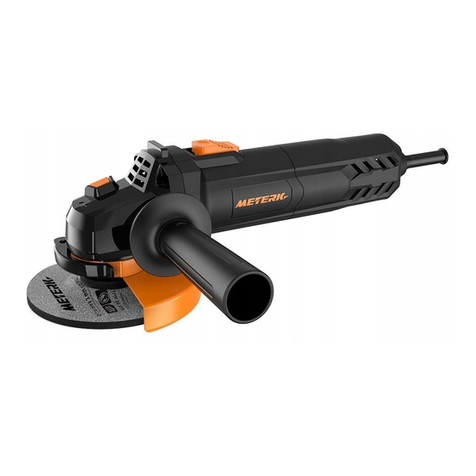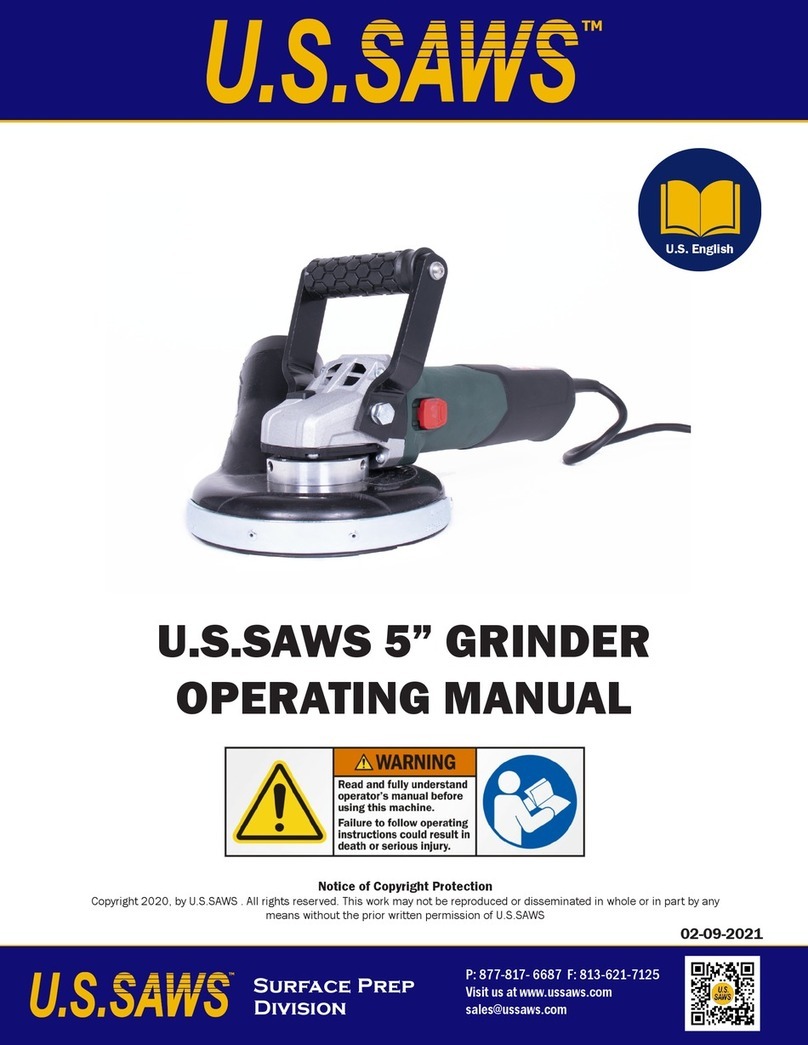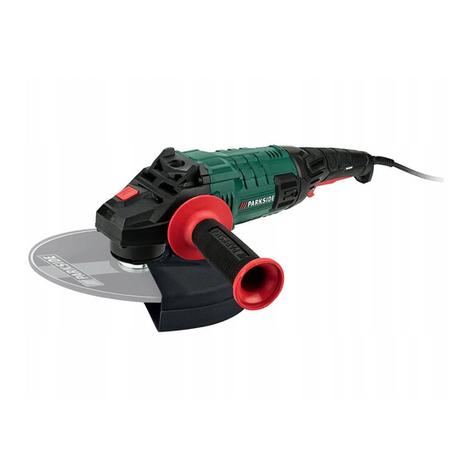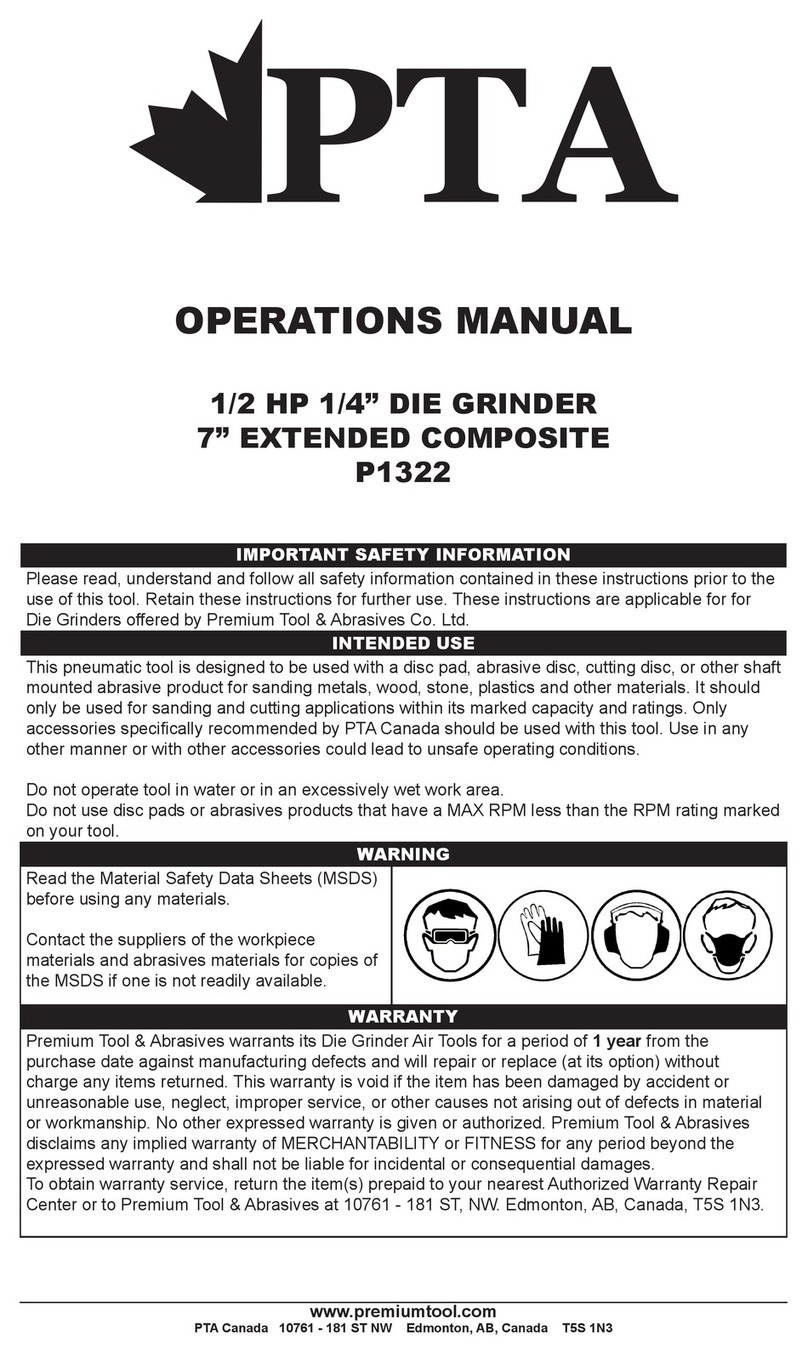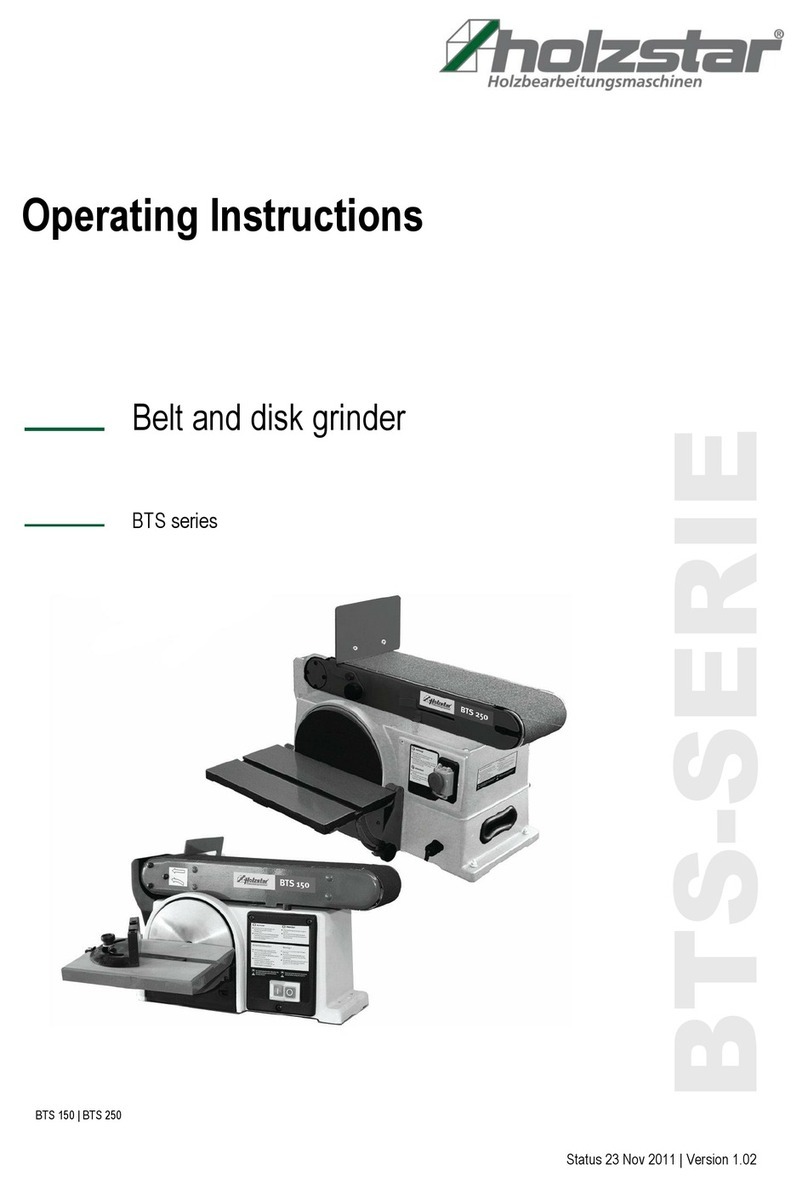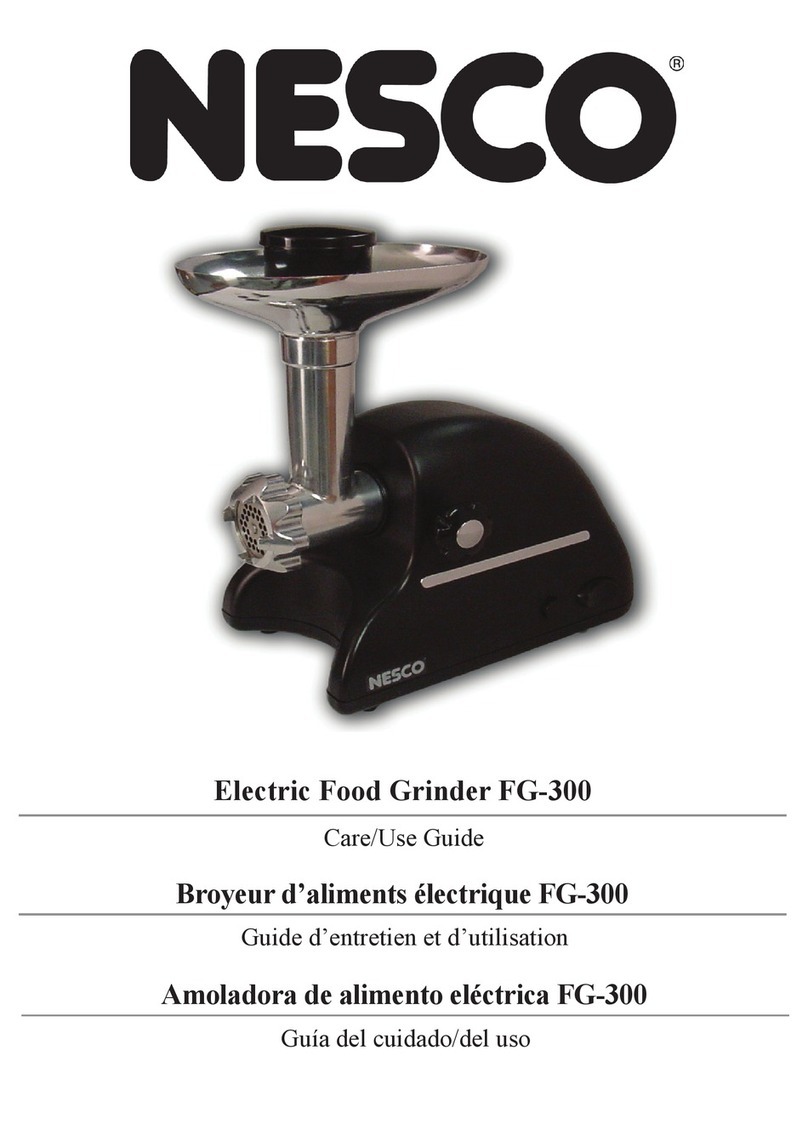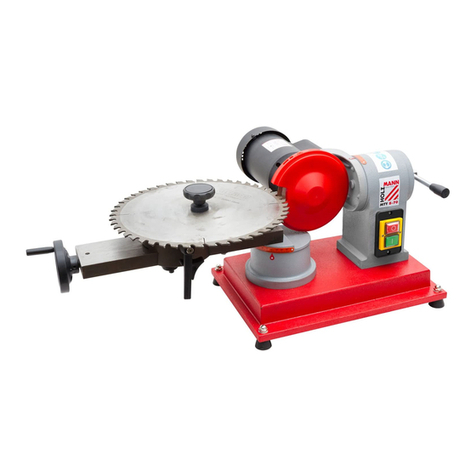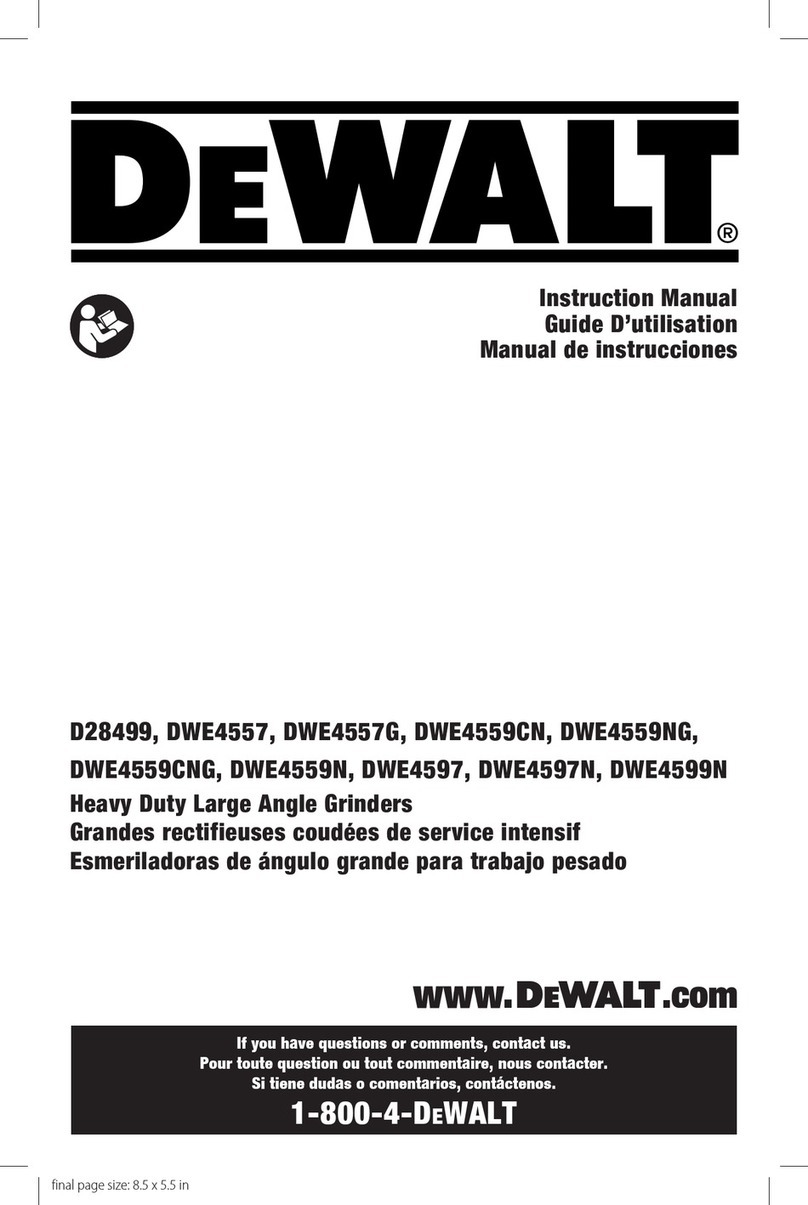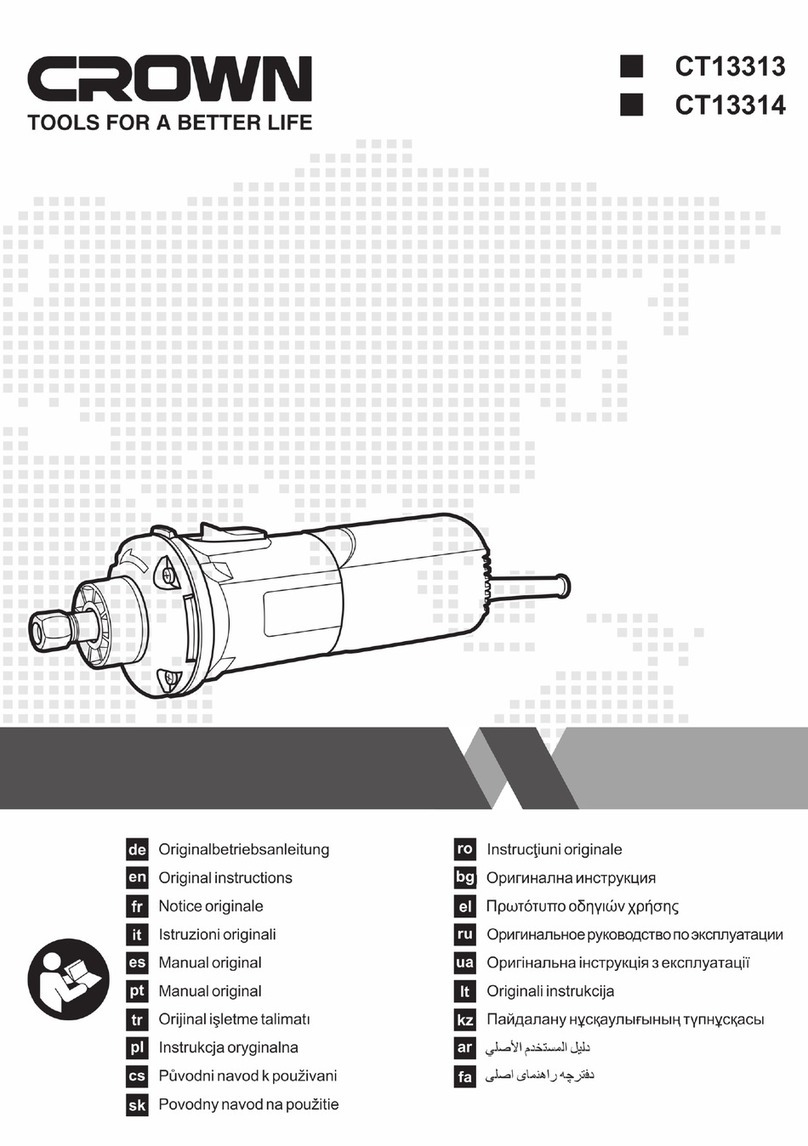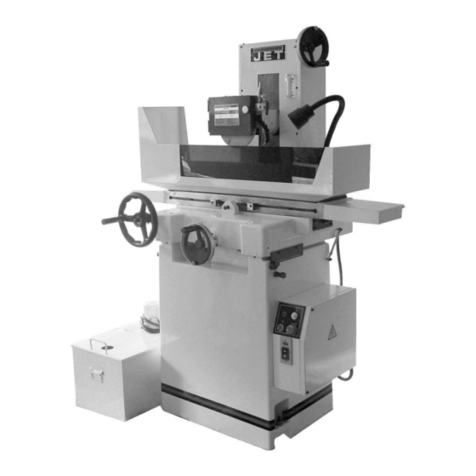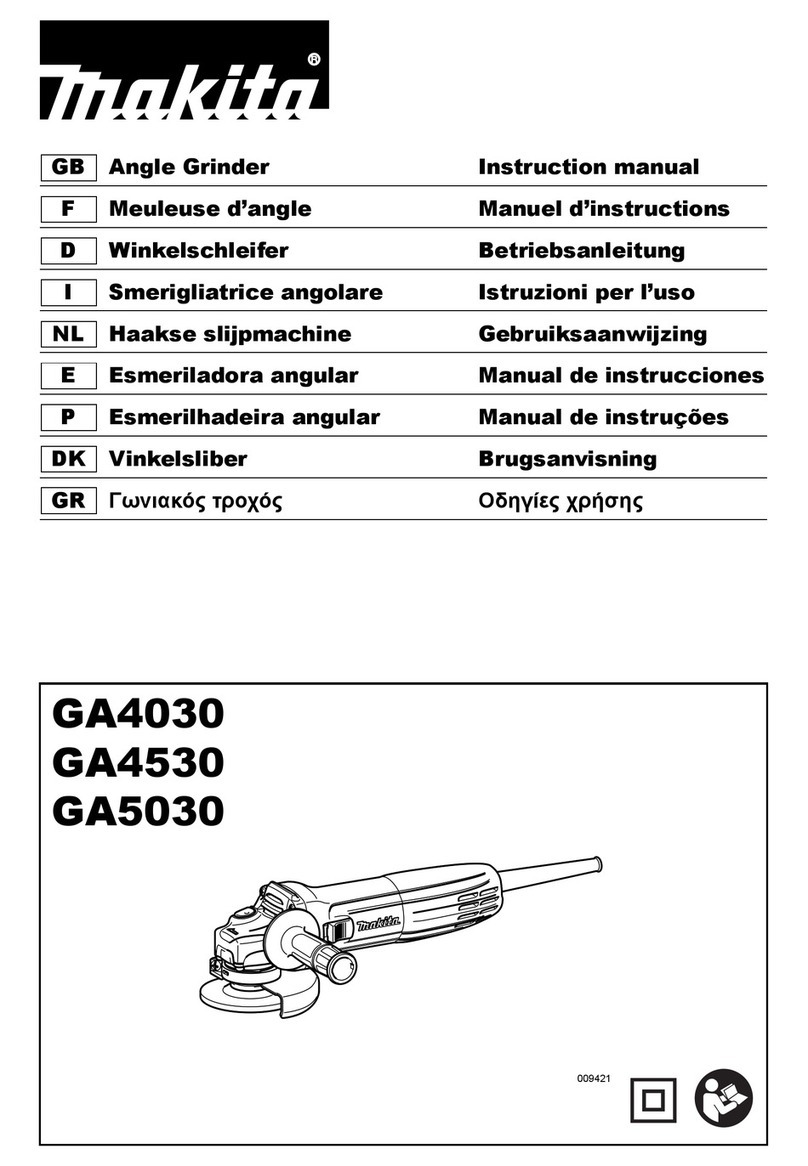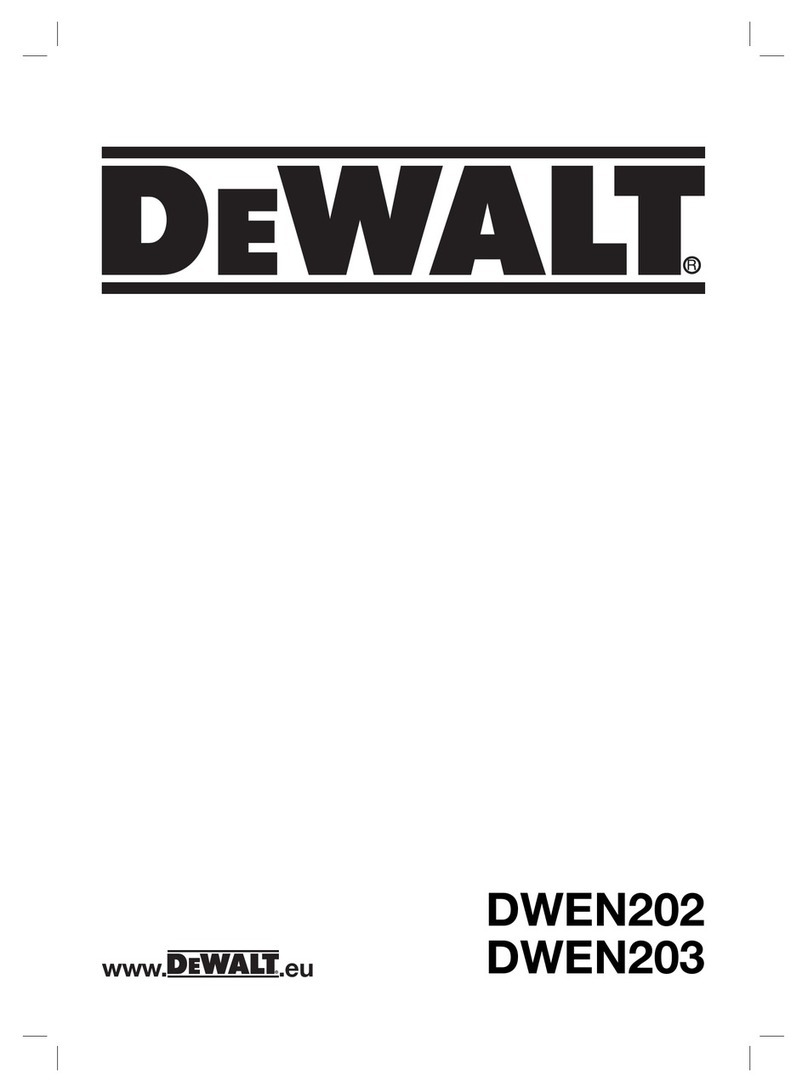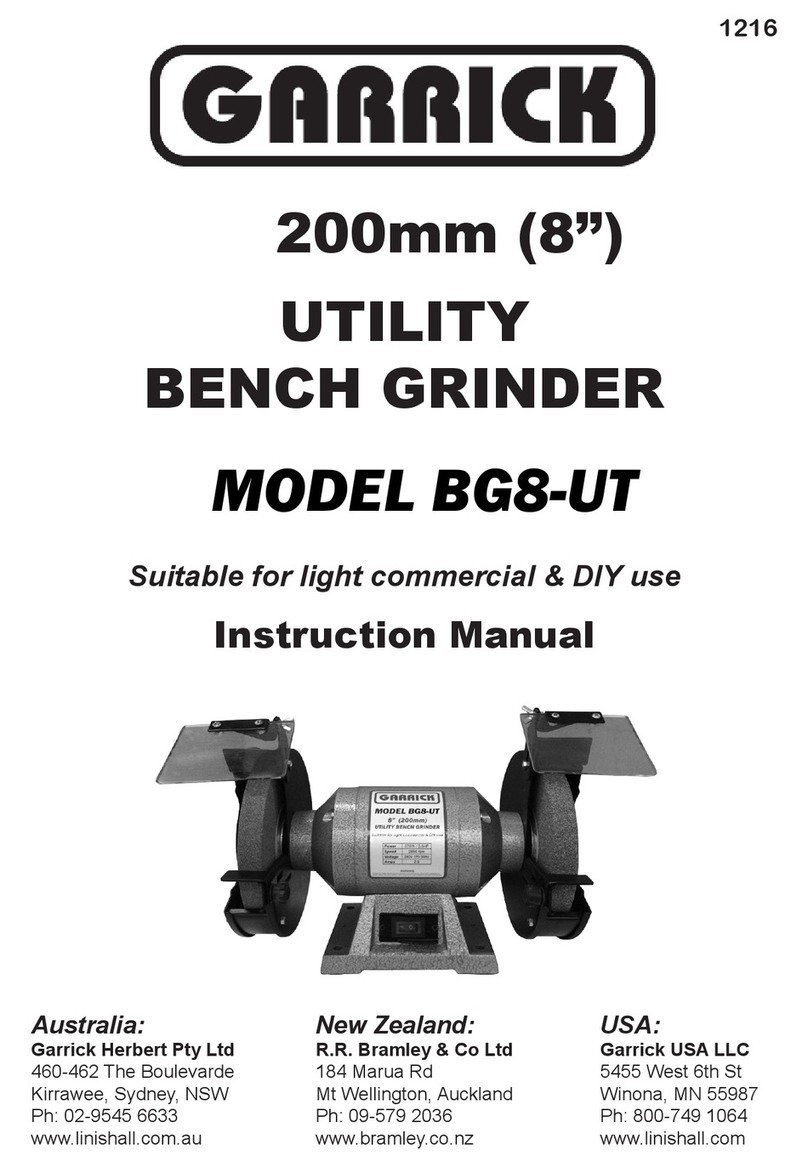
6 OSS 100 | Version 1.02
Intended Use
2.5 Safety signs on the Machine
The following safety signs and notes are applied on the
grinding system (fig. 1), which need to be observed and
followed.
Fig. 1: Safety signs
Damaged or missing safety symbols at the machine may
lead to errors with personal and material damages. The
safety symbols which are applied on the machine must
not be removed. Damaged safety symbols must be re-
placed immediately.
The machine must be put out of operation from the mo-
ment when the labels are unable to be recognized and
understood at first glance, until new labels are attached.
2.6 Regulations for safety and accident pre-
vention
The following instructions are to be followed by the ope-
rating personnel.
- The noise level (sound pressure level) of this ma-
chine may exceed 82 dB (A) at the workplace. In
this case, sound and hearing protection measures
are required and used by the operator.
- Before operating the machine, read the operating
instructions.
- Never touch rotating or moving parts.
- Always report electrical faults to an electrician.
- Always keep work clothes, long hair, jewelery etc.
away from the machine.
- Switch off machine when work is interrupted.
- Wear suitable safety clothing (accident prevention
shoes, safety glasses, etc.).
- Check safety devices for correct function before
starting work.
- Read and understand safety instructions attached
to the machine.
- Perform regular maintenance.
- Do not overload the machine.
- If the machine is not operating normally, the super-
visor must be informed immediately.
- Caution is advised when people are in the work
area.
- Never change the electrical system.
- Never remove mechanical or electrical safety de-
vices.
- Special attention is needed during transport or re-
construction; The transport regulations must be
followed.
3 Intended Use
The Oscillating spindle sanding machine is used exclusi-
vely for sanding wood and wood-like materials (wood fi-
ber board, chipboard, plywood boards, laminated and
non-laminated boards, etc.). Grinding other materials
can result in fire, injury or damage. Please pay attention
to the instructions in the operating instructions as well as
the information signs on the machine. It must be
connected to a suitable extraction system. The spindle
grinder is suitable for private use, in schools, craft shops,
workshops and for home improvement, not for industrial
use. Proper use also includes compliance with all infor-
mation in this manual. Any use beyond the intended use
or otherwise is considered misuse.
Unauthorized modifications or changes to the belt and
spindle grinder may void the CE conformity of the a-
chine and are prohibited.
The company Stürmer aschinen GmbH assumes no
liability for design and technical changes to the belt and
spindle grinder.
The improper use of the Oscillating spindle sanding ma-
chine as well as the disregard of the safety regulations or
the operating instructions exclude a liability of the manu-
facturer for resulting damage to persons or objects and
will invalidate the guarantee!
Ear protection
Please wear ear protection when working with the
device.
WARNUNG!
Gefahr bei Fehlgebrauch!
isuse of the Oscillating spindle sanding machine
can lead to dangerous situations..
- Operate the belt and spindle grinder only in the po-
wer range specified in the technical data.
- Never bypass or override the safety devices.
- Never work on other materials than specified in the
intended use.
- Only operate the belt and spindle grinder in a techni-
cally perfect condition.
- Never work on several workpieces at the same time.
